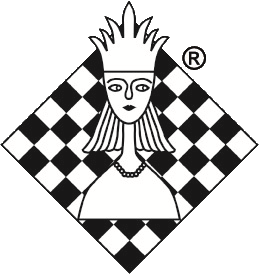London System Overview CB
By Zhigen Lin
In my opinion, there’s one opening that shines above all others when comparing reward payout to the input effort. This opening is relatively quick to learn and obscure enough that even titled opponents may not have a proper antidote lined up. I am talking about the London System, an opening popularised by the London BCF Congress Tournament of 1922.
One of the greatest benefits when playing this opening is that it actually carries theoretical bite in many lines. It is surprisingly common to see games where strong players try to develop naturally against the system and end up falling victim to a crushing attack or simply find themselves in a strategically lost position. The latter case exemplifies another of the best qualities of the London – it is excellent at restricting enemy counterplay.
Brief History
The first ever game recorded in a London ECO code (A46, A48 or D02) is Mason-Blackburne in London, 1883, roughly two players of grandmaster strength. Blackburne must have thought that the opening carried merit and became a major exponent over the next few years.
The tournament that was thought to have put the London System in the public eye was the 1922 London BCF Congress. This was an elite tournament won by reigning World Champion José Raúl Capablanca with an undefeated 13/15 (with four draws). In the game below, we will see a clash between two future world champions from the same tournament. (In fact, they were the next two world champions!)
The tournament also featured many other big names as evident in the crosstable:

What is the London?
The London involves the moves: d4, Nf3, Bf4 and e3. Unlike the Colle System, White develops his dark-squared bishop outside of the pawn chain. His next few moves will change depending on the set-up that Black chooses. In general, White has two approaches
- Black plays …c7-c5 and White responds c2-c3. White will later develop Nbd2;
- Black does not play …c7-c5 and White hits with c2-c4. White will generally later develop with Nc3.
In both cases, either before or after White moves his c-pawn, he will also develop his light-squared bishop to e2 or d3. Normally if Black may play…e7-e5 in the future, White will place his bishop on e2 in order to avoid a potential fork if Black plays …e5-e4.
Who is suited to the London?
I think it is important to first indicate that playing the London exclusively is likely to be detrimental to your chess in the long run. The chief reason is that the London pawn structures are achievable in almost every game, meaning that players will gain little experience in playing in other pawn structures.
The London is probably most suitable for a player who already has a white 1.d4 repertoire, preferably a mainstream repertoire that involves c2-c4 and Nf3. Your opponents will spend most of their time preparing for your theoretically-involved mainstream lines and will have less time to specifically prepare for your London.
The London is fundamentally sound and is not generally vulnerable to preparation. However, opponents may recognise if you play an inaccurate move-order to reach the London setup.
 This opening may also be suitable as an initial ‘transition’ opening when a player starts playing 1.d4 for the first time. In his Build a 1.d4 Repertoire, English Grandmaster Nigel Davies (left) champions this approach as a way to transition into mainstream 1.d4 and 2.c4 lines. In fact Davies recommends the London above other systems like the Colle or Torre for this purpose. Incidentally, Davies has made DVDs on all three systems.
This opening may also be suitable as an initial ‘transition’ opening when a player starts playing 1.d4 for the first time. In his Build a 1.d4 Repertoire, English Grandmaster Nigel Davies (left) champions this approach as a way to transition into mainstream 1.d4 and 2.c4 lines. In fact Davies recommends the London above other systems like the Colle or Torre for this purpose. Incidentally, Davies has made DVDs on all three systems.
Personally, I think the idea of a ‘transition’ opening is not very important for players who can afford to spend a lot of time playing online (in addition to their over-the-board tournaments). They can lose as many “1.d4 2.c4” games online as they like until they become used to the typical plans.
In contrast, a player who plays exclusively over the board may not want to cope with the rating hit they will experience by playing 1.d4 2.c4 cold. (Although this hardly matters for beginners.) Nevertheless, DVDs have allowed us to learn new openings at an unprecedented pace. I quite enjoyed watching Lubomír Ftáčnik 1.d4 – a classical repertoire for White. It is one of the few 1.d4 repertoire DVDs available in recent years. Ftáčnik’s suggested repertoire is very solid, such as his 4. e3 Slow Slav against the Slav Defence, a line very popular at the top level. In fact, his plan suggested against the King’s Indian involving an early h2-h3 has become popular as of late.
How do you learn the London?
As with most ‘system-type’ openings, the London is very fast to learn. In preparing to play the London, a player should learn how to best develop against different black set-ups, such as the King’s Indian structure, a symmetric-style early …d5 and …Bf5, or approaches to trade off the ‘London bishop’ with an early …d5, …e6 and …Bd6.
The modern revival of the London as a theoretical weapon came in 2006 with Win with the London System by Sverre Johnsen and Vlatko Kovacevic. Kovacevic, a grandmaster who hails from Croatia and Yugoslavia, has played the London in a huge number of tournament games, making him one of the best authorities on the subject. This book was a turning point as it was one of the first books to recommend a refined move order with a delayed Nf3 (early Bf4). One of the major advantages of this move order is that White can move his c-pawn more quickly and hence meet …Qb6 lines with Qb3.
 The recent consensus appears to be that 1.d4 d5 2.Bf4 and 1.d4 Nf6 2.Nf3 are the most accurate move orders to reach the London System. There have been other books published on the London since Win with the London System, which are certainly worth investigating.
The recent consensus appears to be that 1.d4 d5 2.Bf4 and 1.d4 Nf6 2.Nf3 are the most accurate move orders to reach the London System. There have been other books published on the London since Win with the London System, which are certainly worth investigating.
One of the more recent products available is by Danish-born Icelandic Grandmaster Henrik Danielsen (right), whose treatment of 1.d4 d5 2.Bf4 is part of ChessBase’s 60 Minutes series. There is also another DVD other than Davies’, which is the one by English International Master Andrew Martin. Martin is a prolific publisher, having made many DVDs with ChessBase. In this DVD he works with Foxy Openings. His approach is more focussed on modern developments and integrates the move orders championed by Johnsen and Kovacevic.
In recent practice, the highest-level regular exponents of the London are Gata Kamsky and Boris Grachev. Vassily Ivanchuk has also been known to play it on occasion. One way to get started is to look up games by these players under London System ECO codes: D02, A46 and A48.
Two sample games

[Event "London BCF Congress"] [Site "London"] [Date "1922.??.??"] [Round "4"] [White "Alekhine, Alexander"] [Black "Euwe, Max"] [Result "1-0"] [ECO "A48"] [Annotator "Zhigen Lin"] [PlyCount "99"] [EventDate "1922.07.31"] [EventRounds "15"] [EventCountry "ENG"] [Source "ChessBase"] [SourceDate "1999.07.01"] {Here is a game from the famous 1922 tournament. My countryman, Charles Gilbert Marriott Watson, had lost to Euwe just the round before, a game which saw a London-like system with e2-e4. In this game, we perhaps see Alekhine's play in a different light to what we are normally used to. Perhaps this is a reflection upon how complete a player's game must be to become a future world champion. As my chess coach once reminded me, Anatoly Karpov, a world champion often referred to as having a positional style of play, was known to have said: "Style? I have no style."} 1. d4 Nf6 2. Nf3 g6 3. Bf4 (3. h3 {Later in the tournament, the reigning World Champion tried his hand at the London System against Richard Réti. Akiba Rubinstein, another player of world championship standard, was also able to take home the full point against Euwe in the final round. There were also a handful of other games in the London.} Bg7 4. Bf4 b6 ( 4... O-O 5. Nbd2 d6 6. e3 Nbd7 7. c3 c5 8. Bc4 b6 9. O-O Bb7 10. Qe2 Qc7 11. Bh2 Rae8 12. e4 cxd4 13. cxd4 e5 14. Rac1 Qb8 15. d5 Rc8 16. Bb5 Rxc1 17. Rxc1 Rc8 18. Bc6 Bh6 19. b4 Bxd2 20. Nxd2 Bxc6 21. dxc6 b5 22. Nb3 Nf8 23. Qd3 Ne6 24. Kf1 Qb6 25. Na5 Qd4 26. Qxd4 Nxd4 27. f3 Rc7 28. Bg1 Kf8 29. Bxd4 exd4 30. Rd1 Ke7 31. Rxd4 Ke6 32. Ke2 Ng8 33. Nb7 Nf6 34. Rxd6+ Ke7 35. Ke3 Ne8 36. e5 Ng7 37. f4 h5 38. g4 hxg4 39. hxg4 {1-0 Capablanca,J-Reti,R/London 1922}) 5. Nbd2 Bb7 6. e3 d6 7. c3 O-O 8. Bc4 Nbd7 9. O-O Ne4 10. Nxe4 Bxe4 11. Qe2 e5 12. Bh2 Qe7 13. Rad1 Kh8 14. Bb5 Rad8 15. Rd2 Bb7 16. Bxd7 Bxf3 17. Qxf3 e4 18. Qe2 Qxd7 19. d5 Qa4 20. b3 Qd7 21. Qc4 f5 22. b4 Bf6 23. Rc2 Rg8 24. Qc6 Qxc6 25. dxc6 Rge8 26. c4 Be5 27. Rd1 Bxh2+ 28. Kxh2 Kg7 29. Rc3 Kf6 30. Ra3 a5 31. bxa5 Ra8 32. Rd5 Reb8 33. Rb3 bxa5 34. Rxb8 Rxb8 35. Rb5 Rxb5 36. cxb5 Ke6 37. a4 d5 38. h4 h6 39. Kg1 g5 40. hxg5 hxg5 41. g4 f4 42. exf4 {1-0 Rubinstein,A-Euwe,M/ London 1922}) 3... Bg7 4. Nbd2 c5 5. e3 d6 6. c3 {Even now, playing c2-c3 against a ...c5 break is thought to be the best plan.} Nc6 7. h3 {A common idea to defend against ...Nh5 ideas. An experienced London player will gain a feel for when this move is most appropriate. Against some setups, playing h2-h3 too early (or playing it at all) may allow Black a powerful and quick central pawn break.} O-O 8. Bc4 {Black probably starts embarking on the wrong plan here.} Re8 (8... cxd4 9. exd4 Qb6 {was better, noting that} 10. Rb1 $6 Bf5 $1 {is a common motif.}) 9. O-O e5 $6 {A bit premature.} 10. dxe5 Nxe5 $6 ( 10... dxe5 {was better, but White still has some advantage after} 11. Bh2 {.}) 11. Bxe5 dxe5 12. Ng5 Be6 (12... Re7 {is the lesser evil.} 13. Nde4 {gives White good central play.}) 13. Bxe6 fxe6 {Already, Euwe claimed that he was lost here in his book "Judgment and Planning in Chess" (1953).} 14. Nde4 { Exchanging knights looks suicidal, but there was no good way to avoid it.} Nxe4 15. Qxd8 {Alekhine's play is simple and strong, but keeping the queen's on was more accurate.} Rexd8 16. Nxe4 {Personally, I find the most attractive quality about this kind of position is that, while White may not have a decisive advantage, virtually the best that Black can do is play for a draw. A well-played game, in my mind, is one where the opponent's counterplay is kept to a minimum for the entire game. Of course, a more objective player would not not mind how he plays for the win, so long that he converts.} b6 {Coverage of the rest of this game is given in the celebrated book "Endgame Strategy" by Mikhail Shereshevsky (1994). Incidentally, my coach gave me this book shortly after we began working together.} (16... c4 {is a good idea to gain counterplay. White keeps the edge after} 17. Rfd1 {.}) 17. Rfd1 Kf8 18. Kf1 Ke7 19. c4 {Black's bishop now has no targets.} h6 20. Ke2 Rxd1 21. Rxd1 Rb8 22. Rd3 Bh8 23. a4 {White has the space advantage and so he dictates the play.} Rc8 24. Rb3 Kd7 25. a5 Kc6 26. axb6 axb6 27. Ra3 Bg7 28. Ra7 Rc7 29. Ra8 Re7 { There is no active plan for Black now. Soon, the pressure to defend everything is too much.} 30. Rc8+ Kd7 31. Rg8 Kc6 32. h4 Kc7 33. g4 Kc6 34. Kd3 Rd7+ 35. Kc3 Rf7 36. b3 Kc7 37. Kd3 Rd7+ 38. Ke2 Rf7 39. Nc3 Re7 40. g5 hxg5 41. hxg5 Kc6 42. Kd3 Rd7+ 43. Ke4 Rc7 44. Nb5 Re7 45. f3 Kd7 46. Rb8 Kc6 47. Rc8+ Kd7 48. Rc7+ Kd8 49. Rc6 Rb7 50. Rxe6 1-0

[Event "Hoogovens"] [Site "Wijk aan Zee"] [Date "1980.01.??"] [Round "2"] [White "Kovacevic, Vlatko"] [Black "Byrne, Robert E"] [Result "1-0"] [ECO "D02"] [WhiteElo "2510"] [BlackElo "2530"] [Annotator "Zhigen Lin"] [PlyCount "83"] [EventDate "1980.01.??"] [EventRounds "13"] [EventCountry "NED"] [EventCategory "11"] [Source "ChessBase"] [SourceDate "1999.07.01"] {Here we have one of the heroes of the London, Vlatko Kovacevic playing against Robert Byrne, a few years after the latter won the US Championship and became a World Championship Candidate.} 1. d4 Nf6 2. Nf3 d5 3. Bf4 Bf5 {While symmetric systems are often effective against openings that do not exert a lot of influence over the centre, one of the London's great strengths is that this kind of position is theoretically favourable to White.} 4. e3 c6 5. c4 $1 {The main reason why White has a theoretical edge. In the London System, White must be ready to play c2-c4 in some situations instead of the standard c2-c3. The modern way to reach this kind of line is 1.d4 d5 2.Bf4 Bf5 3.c4! White does not always put his knight on f3 as a pawn on this square can also be very effective.} e6 6. Nc3 Nbd7 7. Qb3 {White takes advantage of the fact that Black's light-squared bishop is no longer on c8 and forces Black's queen to an unfavourable square.} Qb6 (7... Qc8 {is passive and will allow White uncomfortable pressure after a later Rc1.}) 8. c5 {Now we see the effectiveness of c2-c4. White gains an enormous amount of space in these lines. } Qxb3 9. axb3 {White threatens b3-b4-b5, and whether Black captures on b5 or White bides his time before capturing on c6, the resulting structure is extremely favourable to White.} a6 {Byrne quickly tries to prevent this.} (9... Nh5 {is not a threat yet due to} 10. Be5 $1 $14 {.}) 10. b4 {b4-b5 is still a threat due to the pin on a-file.} Rc8 11. h3 {Kovacevic wants to preserve his bishop, so he does not allow any .. .Nh5 ideas any more.} Be7 12. Nd2 {The knight heads to b3 and a5, where the b7-pawn is awkward to defend due to White's powerful dark-squared bishop.} O-O ({If Black delays castling with} 12... Bd8 {, a good resource to remember is} 13. Bd6 $5 Bc7 $2 14. Bxc7 Rxc7 15. b5 $1 $16 {.}) 13. g4 $1 {It may come as a surprise how effective this move is. The bottom line is that the position is relatively closed and White can literally afford to bully Black around. This move improves White's space advantage.} Bg6 14. Nb3 (14. Be2 Rfe8 15. h4 $14 {is even stronger.}) 14... Ra8 ({Black probably has to resort to the miserable-looking} 14... Bd8 {, whereupon } 15. Bd6 Re8 16. g5 $5 Ne4 17. h4 {allows White to keep an edge.}) 15. Na5 Ra7 {This kind of defence is probably a bit too passive. Essentially White's knight puts Black's rook out of play, effectively like being up material with a coming kingside attack.} 16. f3 {White seals Black's pieces out of e4 and again asserts his spacial dominance.} Rc8 (16... Ne8 17. h4 f6 {was better, but White keeps a big advantage after} 18. Kf2 {.}) 17. Kd2 b6 $4 {Sometimes players can do drastic things when there is no active plan. White obtains a winning advantage with a neat combination.} ({My engine suggests going backwards with} 17... Rd8 {, but White maintains a clear advantage after} 18. h4 h6 19. Be2 {.}) 18. Bxa6 $1 Rxa6 19. Nxc6 Rxc6 20. Rxa6 Rc8 21. Rha1 bxc5 22. Ra8 $1 {A nice zwischenzug , ensuring that Black has insufficient forces to create counterplay.} Rf8 23. bxc5 {There's no good way to deal with the impending advance of White's queenside pawns.} Nxc5 24. Rxf8+ Kxf8 25. Ra8+ Ne8 26. dxc5 Bxc5 27. Rc8 Be7 28. e4 dxe4 29. Nxe4 f6 30. Bd6 f5 31. Bxe7+ Kxe7 32. Nc5 Kd6 33. b4 Nc7 34. Rxc7 {White decides to simplify into a won endgame. He could also have kept the rook on the board.} Kxc7 35. Nxe6+ Kd6 36. Nxg7 fxg4 37. hxg4 Kd5 38. Ke3 Kc4 39. f4 Kxb4 40. f5 Bf7 41. Ne6 h6 42. Nd8 1-0
About the author
 |
Zhigen Lin is a former Australian Under 16 Champion. He has represented Australia in world youth tournaments in France, Turkey, Georgia and Singapore. He has just completed his double degree in Commerce and Science at Monash University, majoring in finance and applied mathematics. Next year, he will undertake an honours year in applied mathematics with a project in general relativity. His favourite area is ordinary differential equations. Zhigen’s website is called Chess Game Improvement and he also maintains a chess-focussed YouTube channel. Zhigen’s long-time coach and dear friend FM Geoffrey Saw is the coach referred to in the annotated games. |
























